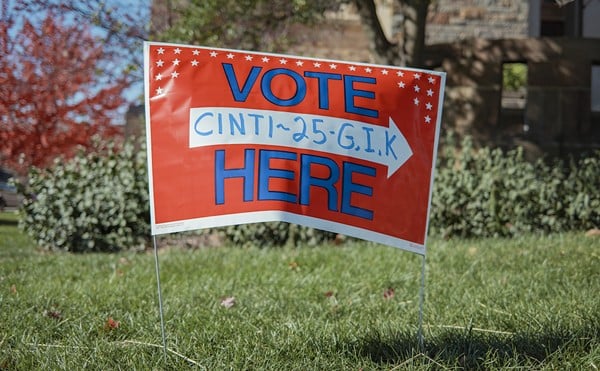I know what you're thinking. It's almost as if I can practically feel it. The layoffs resulting from corporate downsizing continue, and quarterly reports are as chilly and dismal as the weather with new cases of "Enronitus" reported almost daily.
The potential for war lurks in the background, and retail sales forecast for the holiday season are cautiously optimistic, with hopes of mediocre sales perhaps increasing slightly over last year.
Business publications' enthusiasm for a more fast-pace recovery as we move through the fourth quarter is underwhelming and is received with the same amount of passion as a guaranteed Bungals victory.
In the back of your mind you're asking when will the "irrational exuberance" that busted the equities market bubble happen to the housing market? Should I be thinking about or even considering at all buying or selling, trading up maybe or purchasing a second home? When will the tall timbers that are still growing in the housing forest start falling like the ones that grew so well and for so long in the Wall Street woodlands?
Although each forest is related to the other and to a certain degree intertwined, sharing some of the same species between them for the most part, they're actually unique freestanding forests that react differently to the available economic nutrients. In other words, what affects one might or might not affect the other.
Wall Street trees or stocks grew too tall and too fast with company valuations becoming seriously overstated during the bubble years. Price-to-earning ratios increased in a range from 30 to 300 percent compared to pre-bubble price earning ratios in the range of 8 to 20 percent. It was simply a matter of time before the forest became unstable, given this unsustainable rate of growth and increase.
But over in the housing forests, an entirely different growth pattern and sustainable rate of development has emerged. Mortgage rates continue to decline, making homes more affordable, which gives first-time buyers the confidence and the means to buy homes. At the same time, older boomers have entered their peak earning years and have the financial resources to trade up or purchase a second home.
From a national perspective, the increase in immigration over the past two decades has widened homeownership demand by stimulating innovative mortgage products and credit counseling programs that have raised rates of homeownership among minority and low-income households. (Not that all that could be done has been done to assist these groups even more.)
All of these factors, when combined, result in an increased demand for housing that in turn helps generate a healthy appreciation in home prices. Take a look at the housing markets' home price-to-income and mortgage payment-to-income ratios and compare them to the stock market's P/E ratios.
In recent years, home price-to-income ratios have risen to around 3.0 (three times gross income), remaining comfortably within their historic range of 2.5 to 3.1 over the last 22 years. Mortgage payment-to-income ratios have actually improved during the past several years from .35 (35 percent of gross income) to .19, suggesting little evidence of irrational buying or of an endangered forest.
Many households are looking to the housing forest not as an investment but as a safe place to be and live, because the forest can be seen through the trees. While the other forest grew at a phenomenal and irrational rate, housing remained and continues to be a tall, strong, reasonable and sustainable place to be and to put your money.
THIS WEEK'S TIP: Alternative Ways to Finance a Home, Part 3
A concession is anything of value added to the transaction by the seller, builder, developer or any interested party. It also can include any closing costs that normally would be paid by the buyer or cash given to the buyer to reduce non-housing debts.
From the seller's perspective, there might be little difference in offering a monetary concession or lowering the property price. However, to a buyer, a concession might be preferable, because it's money that can be applied directly to the purchase.
In recent years, lenders have offered an increasingly wide variety of low- or no-downpayment programs to enable people to buy homes of their own. Many of these programs go hand-in-hand with programs offered by Fannie Mae and Freddie Mac to reduce downpayment and closing costs.
In short, there are a lot of options available to would-be buyers. Make sure you explore every avenue out there.
Home Work is a weekly column geared toward residential real estate.





